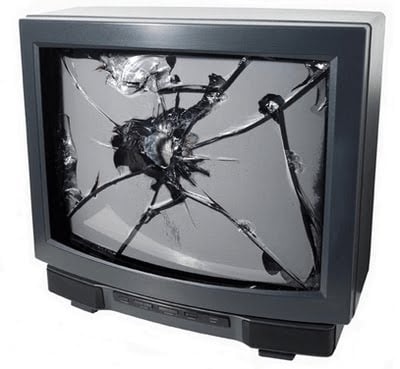"My piss has a stronger stream." - tits hemmingway
 When things go wrong during a live action sports webcast, online audiences feel no inhibition about getting poetic. Something about the anonymity of the web combined with stuttering video creates heartless little creeps who have no sympathy for the unyielding complexities of live events. However, while dipping into their proverbial French vocabulary for four letter words, sometimes the audience manages to pull off a metaphor worthy of Shakespeare (or more likely, David Mamet) such as this eloquent (some might say Hemingway-esque) beauty left in the comments of one of our competitor's webcasts.
When things go wrong during a live action sports webcast, online audiences feel no inhibition about getting poetic. Something about the anonymity of the web combined with stuttering video creates heartless little creeps who have no sympathy for the unyielding complexities of live events. However, while dipping into their proverbial French vocabulary for four letter words, sometimes the audience manages to pull off a metaphor worthy of Shakespeare (or more likely, David Mamet) such as this eloquent (some might say Hemingway-esque) beauty left in the comments of one of our competitor's webcasts.
We know that this unfortunate outpouring of creative energy, enough to make a longshoreman cringe, can be avoided. In our experience, there are a few key factors that seem to be at the heart of most of these horror stories. Knowing that this is the fear of event organizers around the world, we thought we'd put together a brief checklist for how you or your provider can ensure a smooth live stream. Mastering these, like we have, enables you to kill the muse for your viewer's inner online poet.
Get a dedicated encoder
In action sports, every frame counts. Drop a couple of frames and in that split second, a 1080 is indistinguishable from 360. To make things worse, during a 1080 is when your encoder is most likely to drop a frame or two or 20. It's not Murphy's law at work, it's just the way the technology has been built.
In order to squish that huge amount of information from your massive HD video stream (that you've paid tens of thousands extra for) into your viewer's tiny internet tubes, you need compression. Video compression means looking for similarities between video frames and throwing out the redundant info. It's not too hard on a compressor when it's a lock down shot of a talking head with only a moving mouth. Throw a panning, zooming double cork at it where every pixel changes, and you've just overloaded your encoder.
Your free encoder (ahem, Adobe Live Media Encoder, we're calling you out) that works just fine for corporate stockholder meetings can do one of two things when faced with more information than it can handle. It can either push out a bandwidth spike in your stream or drop frames. (ALME likes to do both) Either one of these will cause problems, as we will explain.
The solution? Tell two-time X Games Gold Medalist Bobby Brown he can only do straight airs all the way down the course. But seriously, get a dedicated encoder with plenty of overhead so it can handle those double and triple corks.
How do you know your encoder can handle it? Stream your favorite action sports DVD. When you like the results, keep the encoder (or the provider).
Next up, why all CDNs are not created equal, and how to choose the right CDN for your live webcast.
